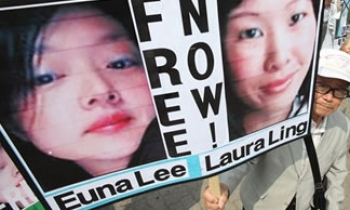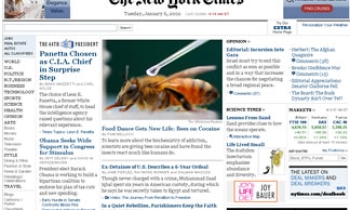SANA’A Results of the first ever study into working conditions for women working in the media are to be announced this week at a workshop organized by the Yemeni Female Media Forum (YFMF).
The workshop, which will run from January 22-23, will present the results of the first public survey concerning the status of the media in Yemen media - and the obstacles they face in the society and in their institutions while carrying out their job.
Rahma Hujira, chairwoman of YFMF, said the report would be important to help future women working as journalists. "This study will constitute a solid grounding for any support or activity for women in media, and it will be the first of the kind in Yemen that surveys the female in media", Hujira said.
Up to 50 women from governorates across Yemen are expected to attend the workshop, which is run in cooperation with the joint Yemeni Media Development Program (JYMDP). The YFMF is funded by the National Endowment for Democracy (NED). Although such a study has not been carried out in Yemen, it is the third time it has been done in the Arab world.
Female journalists were asked as to what types of discrimination they believed they were subjected to and the effects that such behavior had. The survey also examined the effect that cultural attitudes have on their performance, and asked whether they had as many equal and fair opportunities as those obtained by their mail colleagues in terms of press coverage, decision-making, promotions and access to executive and leading positions, training and the money they received.
Up to 650 female journalists were questioned, who work in media institutions in the main ten cities in Yemen. Ministries and the heads of various varied media institutions - including print, radio and television from both the government and opposition sides, domestic and national - are expected to take part in the workshop to discuss the results.
The study looked at many vital issues, not least the types of discrimination against female journalists. The study sought to reveal all types of discrimination against female journalists within various media institutions.
Some of the most apparent discriminative practices against women are the few training opportunities offered to them and depriving women of moving up the career ladder to take executive and leading positions, which are usually given to male journalists. Another kind of discriminations is prevention of being able to take part in events that take place abroad.
Female journalists are also deprived of attending qat chewing sessions that occur at media institutions in the evening, during which men discuss important issues. Women are not allowed to attend such sessions because they are held out of working hours and because they are not for women. Last, but not least is the sexual harassment and immodest treatment some presswomen are subject to by their male colleagues from time to time.
However, initial results from the research, shown in the graph below, revealed that despite the difficulties and discrimination, almost three-quarters (74%) of female journalists enjoy a high degree of job satisfaction,
This reflects their perseverance and determination to face up and overcome the frustrating conditions, the report added. The effect of the cultural environment on a female journalist’s profession and work has also been included in the study, revealing several positive effects the traditions and custom have.
However, the negative effect appeared when those women’s activities clash with traditions and customs. Over 60% of female journalists said that the cultural environment impacted onto their work.
Some other aspects are more encouraging, especially the use of technology by women reporters. The study found that about 57% questioned use a computer and internet in their profession, and that 65% of female journalists are training themselves in modern technologies to learn about new developments in the media such as e-journalism.
Conclusions and recommendations suggested by the surveyed journalists include calls for more training including mastering a foreign language- and the existence of a fair standard of wages and bonuses.
The study also covered several significant issues, including the percentage of women in leading positions, future training needs, the ease of winning promotion and a female journalists devotion to the profession.









